A friend of mine has been researching the use of tiki symbolism in New Zealand prior to the 1950’s, and most notably it’s use in military units and formations. A German author, Sven Kirstin, has written 3 books about tiki pop culture (published by Taschen), claiming that this was somehow a unique cultural invention particular to the United States. Despite the fact it has been pointed out to him that white New Zealanders adopted the tiki as a popular culture icon on postcards, book covers, stamps, ashtrays, cigarette lighters, mugs etc. decades before white Americans did, he has failed to mention this in his books and persists in his view that it’s a unique cultural feature of the USA that originated around the 1950’s.
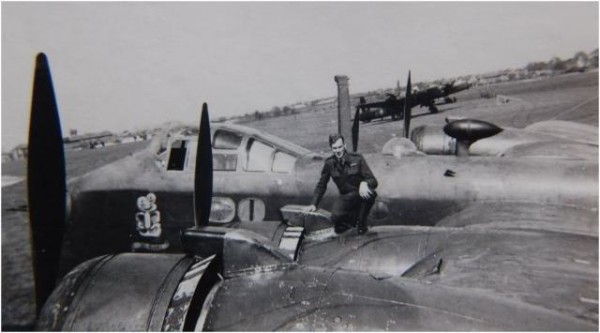
The following nose art photos show a little-known aspect of NZ culture in the early 20th century – the degree to which these icons of Polynesian culture were integrated into Pakeha society, to the extent that Pakehas going to war would paint them on their fighters and bombers! In spite of the fact that Hawaii was a de facto part of the American “Empire” from the 1870s, the tiki as a pop culture icon was not adopted by white American society until the 1950s, and this RAF/RNZAF nose art has no American equivalent in the USAF (and USAAF). The earliest USAF evidence of this is a photo dating from 1947, well after the end of World War II (and who knows – the unit concerned may have been influenced by contact with New Zealand units in the Pacific during World War 2).
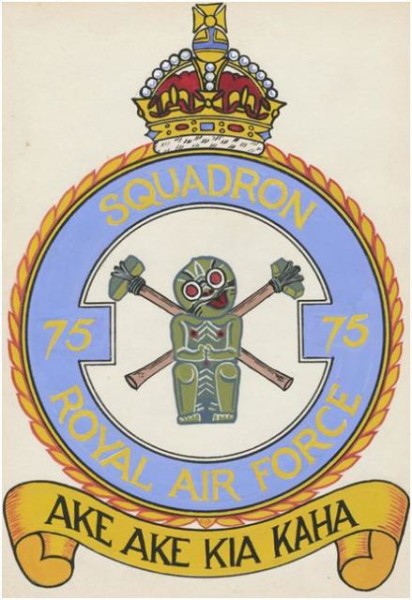
The ‘original’ tiki squadron was No. 75 Squadron of the RAF, which was equipped by the New Zealand Government (i.e. New Zealand paid for all the costs) and crewed entirely by New Zealanders. In World War II, flying bombing missions from England over Nazi-occupied Europe from 1940 to 1945, it flew more sorties and suffered more casualties than any other Allied squadron. Pictured above is Pilot Officer Ben Dallenger with his tiki-emblazoned Stirling bomber, named “Te Kooti” (after the famous 19th-century Māori warrior chief). Ben Dallenger and his crew were shot down over Essen during a raid on 17 September 1942 and there were no survivors. No. 75 Squadron had been carrying tiki symbols on at least some of it’s aircraft prior to this as evidenced by this 1942 photo, and possibly from as as early as it’s original formation in 1940.
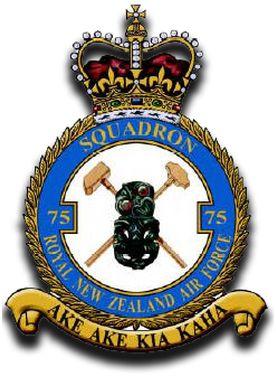
Its crest, which dates from February 1943, features a tiki and crossed clubs with greenstone Pounamu (similar to jade and unique to New Zealand) heads and the Māori language moto “Ake Ake Kia Kaha” (Ever Ever Be Strong or more commonly Forever Strong). The squadron’s number, insignia and battle honours were transferred to the Royal New Zealand Air Force by the RAF in 1946 and it continued to use a variation of it’s World War II tiki crest as pictured above. The squadron flew Wellingtons, Short Stirlings, Avro Lancasters and finally Avro Lincolns during World War II, and post war flew De Havilland Mosquitos and De Havilland Vampire jet bombers as well as some loaned RAF Canberra jet bombers (based in Singapore), before converting to A-4 Skyhawks. Sadly No. 75 Squadron (along with Nos. 2 & 14 Squadrons) was officially disbanded on 13 December 2001 when the New Zealand’s Labour Government of the time decided to cut funding for the RNZAF’s entire Air Combat Force and mothball it’s A-4 & TA-4 Skyhawks.
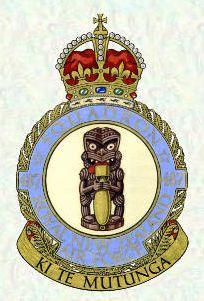
Mention should also be made of No. 487 Squadron RNZAF, which was formed in England in August 1942 and flew De Havilland Mosquito fighter-bombers (“the wooden wonder”) on various high-profile raids into Nazi-occupied Europe, including low-level attacks on Amiens prison in France (18 February 1944), the Gestapo HQ in Aarhus, Denmark (31 October 1944), and the Gestapo HQ in Copenhagen, Denmark (21 March 1945). The official squadron crest shown above, which dates from January 1944, features a tiki preparing to drop a bomb, and the Māori language moto “Ki Te Mutunga” (Through To The End).
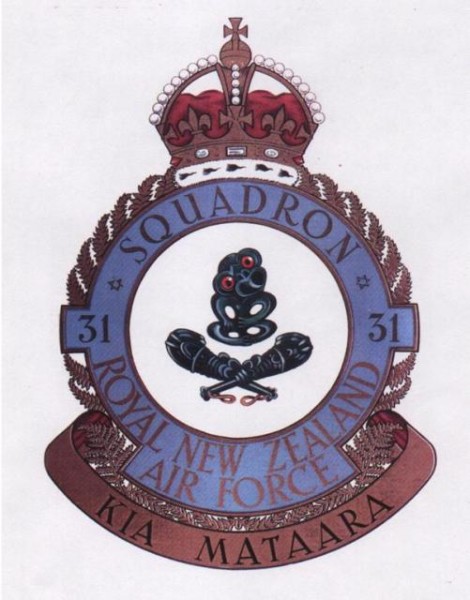
Next on the list is No. 31 Squadron RNZAF, formed in New Zealand in December 1943, and which flew Grumman TBF Avenger Dive Bombers on the island of Bougainville from May until August 1944. The official squadron crest used in World War II is shown above, and features a tiki and crossed greenstone Pounamu Mere (clubs), and the Māori language moto “Kia Mataara” (Be Alert). It’s last operations involved bombing Japanese crops & cultivated land on outlying areas of Bougainville and surrounding islands, including experimental spraying with diesel oil at tree-top height and then the dropping of incendiaries. The squadron returned to New Zealand and was disbanded in August 1944 after around 2-3 months operational service on Bougainville.
More New Zealand tiki squadron history follows in The New Zealand Tiki Squadrons (2).
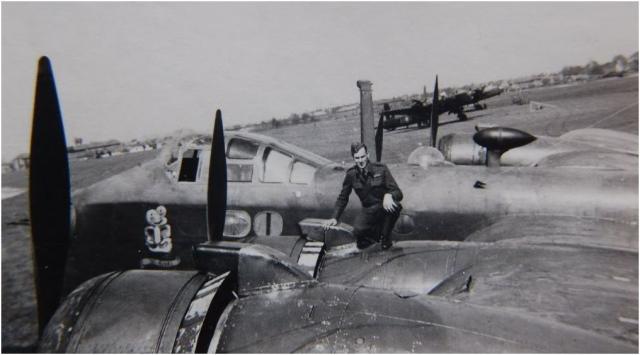
Greetings. The tiki was used in World War One on numerous military badges. The tiki was chosen by New Zealand servicemen and the badges designed by them as particularly relevant to New Zealand. The NZ tiki ‘culture’ preceded the US version by many many decades and is well documented. Clearly Sven Kisrtin is turning a ‘blind eye’ to what is already recorded in many resources including online.
Regarding 75 (NZ) Squadron RAF. It was partially funded by New Zealand and was partially crewed by New Zealanders. It was never fully crewed by New Zealanders and the ground crews who looked after the aircraft were predominantly British. It was also led by British commanders on occasions. The squadron was a RAF squadron, not a Royal New Zealand Air Force Squadron. There were seven NZ RAF squadrons in all.
Maori symbolism and the use of the tiki on postcards, posters, military symbolism etc in New Zealand has been around since the nineteenth century so well and truly predates what Sven Kirstin suggests.
Thanks John – that’s great info and much appreciated. Thanks for contributing and adding some clarifications around the Tiki use and culture.